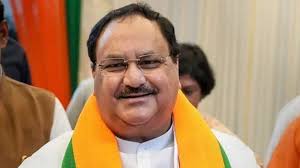Union Health Minister J P Nadda
The eSanjeevani platform has been instrumental in reducing the burden on physical healthcare facilities, Nadda said responding to a question
New Delhi: Since its launch in 2019, more than 34 crore patients have been provided consultation through the eSanjeevani platform till February 2, 2025, Union Health Minister J P Nadda told the Rajya Sabha on Tuesday.
The eSanjeevani platform has been instrumental in reducing the burden on physical healthcare facilities, Nadda said responding to a question.
It played a crucial role in offering medical consultation across the length and breadth of the country during the Covid pandemic and continues to provide free consultation to patients even in rural and remote areas of the country, he said.
Thus, it is ensuring availability, accessibility and affordability of medical services throughout the country, Nadda said.
The eSanjeevani is implemented in two variants — eSanjeevani Ayushman Bharat Ayushman Arogya Mandirs (AB-AAM) and eSanjeevani OPD.
The eSanjeevani AB-AAM is a provider-to-provider telemedicine system, launched in November 2019 and is based on ‘hub and spoke’ model, Nadda said.
More than 73.98 crore Ayushman Bharat Health Accounts (ABHA) created
More than 73.98 crore Ayushman Bharat Health Accounts (ABHA) have been created and over 49.06 crore health records have been linked with ABHA, Union Minister of State for Health Prataprao Jadhav told the Rajya Sabha.
Over 3.63 lakh health facilities have been registered on the Health Facility Registry (HFR) and over 5.64 lakh healthcare professionals are registered on the Healthcare Professional Registry (HPR), Jadhav said in a written reply.
The minister shared health data collected till February 6.
Ayushman Bharat Digital Mission (ABDM) has been launched with the aim of enabling interoperability of health data within the health ecosystem and creating electronic health records for every citizen.
The ABDM comprises key registries such as the ABHA, HPR, HFR and drug registry, Jadhav said.
Inclusion is one of the key principles of ABDM and the digital health ecosystem created by ABDM supports continuity of care across primary, secondary, and tertiary healthcare in a seamless manner, he said.
It aids the availability of health care services, particularly in remote and rural areas through various technology interventions like telemedicine etc, Jadhav said.
The minister said various steps have been taken to ensure the benefits of the mission reach every citizen. The ABHA portal [abha.abdm.gov.in] and the government PHR (personal health record) applications such as the ABHA app and Aarogya Setu app have been made multi-lingual and intuitive to use, with a view to addressing the lack of digital literacy, he said.
The ABDM provides for assisted and offline mode for the creation of ABHA for areas with limited internet connectivity or hardware or both, Jadhav stated.
Non-delivery of medical services in rural areas far from truth: Nadda
MeanwhileNadda on Tuesday said the question being asked by members of parliament on non-availability of medical services in rural areas is “far from the truth”.
During Question Hour in the Rajya Sabha, the minister said there may be less number of doctors posted on ground in rural areas but the shortage is being addressed by the government by increasing medical seats that will lead to addition of 75,000 new doctors over the next five years and 10,000 this year.
“The question frequently arises that we are unable to serve in rural areas, it is very far from the truth. Our MMR (maternal mortality rate) is double that of global decline. U-WIN tracks every mother who becomes pregnant till the delivery time and when the child becomes two years old and gets all the injections done. Everything is tracked,” Nadda said.
To cite the strength of the medical system, the health minister said 220 crore double doses with booster injections were given during the Covid-19 pandemic across the country even in the remotest part of the country.

